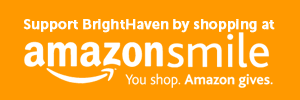Measuring quality of life is a standard method used to help make hospice care and end-of-life decisions regarding an animal companion.
At BrightHaven, we believe the way in which quality of life is measured should change as the hospice journey progresses towards dying, and as our research has shown, there is a keen demand for such a tool in animal hospice.
We also understand that a being is fully alive until dead and must be treated accordingly, with dignity, compassion and a commitment to maintaining that being’s comfort.
What is the Quality of Dying (QOD) Checklist?
The checklist is based on the acronym “PEACEFUL” and this helpful tool was developed by a consortium called GRACE consisting of Dr. Ella Bittel of Spirits in Transation, Dr. Kathryn Marocchino of The Nikki Hospice Foundation for Pets and Gail Pope, president and founder of BrightHaven. The QOD Checklist is designed to help people work through the dying process.
It IS a checklist, NOT a scale, and is focused on healing rather than cure. At BrightHaven, we define healing as achieving balance of body, mind & spirit.
It is an important tool that also:
- Determines acceptable quality of life to continue the normal, natural dying process.
- Benefits the entire hospice team when an animal appears to be approaching death.
- Facilitates a discussion on the different hospice care approaches and end-of-life options available to the caregiver and patient, which include euthanasia and a hospice-supported natural death (HSND).
- Provides information to help client/caregiver make an informed decision, rather than one based on fear.
- Remains neutral to the medical approach—conventional, holistic or integrative.
Who Can Use the QOD Checklist?
- Caregiver & caregiver’s family & friends.
- Veterinarian.
- Vet techs.
- Other hospice practitioners.
- Social worker.
- Holistic therapy practitioners.
- Animal intuitive/communicator.
- Respite support.
When Is the QOD Checklist Used?
The focus shifts at the time the dying process begins, a time that is different for every being and generally around 1-3 months prior to death
From the human’s perspective, the checklist becomes relevant at the time the caregiver or other members of the team begin questioning quality of life.
From the animal’s perspective, the checklist comes into play when things start to change symptomatically and/or emotionally, indicating that the dying process has started. A few of the things you may notice at this time include:
- Symptoms of chronic illness are starting to fade.
- The animal is slowing down more and detaching a little more from daily life.
- The animal is preferring more solitude.
What Does the Hospice Provider Do with the QOD Checklist Assessment Results?
The hospice provider:
- Makes & discusses assessment with the caregiver, loved ones and team.
- Assists the caregiver with clarifying where animal is in dying process.
- Helps the caregiver understand death may not come as soon as they expect.
What Does the Caregiver Do with the QOD Checklist Assessment Results?
It’s important for the caregiver to:
- Discuss findings with loved ones & support team.
- Realize that s/he has choices.
- Understand the implications of each choice.
- Consider his/her own spiritual beliefs.
- Look at things from the patient/animal’s perspective.
- Remove fear from the equation.
Knowledge reduces fear and increases confidence, and conscious decision-making may minimize future regrets. We invite you to explore our caregiver resources (including animal hospice education and holistic healthcare education), online learning and publications to learn more. You may also wish to book a consultation with BrightHaven President and Founder Gail Pope.



